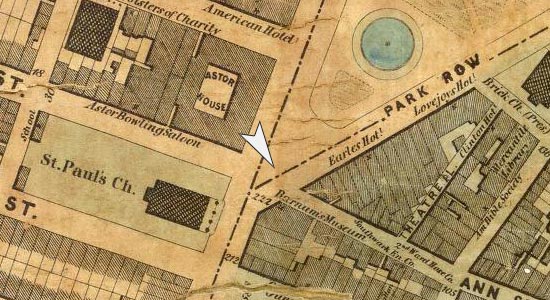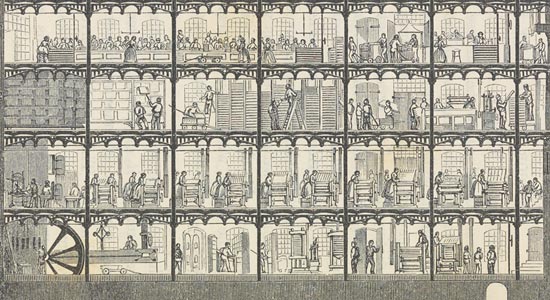Stereoviews, a new visual form and household commodity, swept across the United States in the middle of the nineteenth century, bringing considerable profits to New York manufacturing and retail firms. The ability of these images to trick the eye and offer the experience of traveling to another place exponentially expanded on the novelty of photography. New York vendors, including Appleton & Co. and E. & H. T. Anthony and Company, which successfully profited from this new technology, first imported and eventually manufactured stereocards for a wide variety of Americans and city visitors (see Spofford, Prosperous Partnership).
However, despite the mass distribution and incorporation of stereoviews into American culture, many people remained mystified by how they actually worked, causing Scientific American to state, “[W]e have taken for granted that the philosophy of the stereoscope was generally understood, but a little inquiry among our friends . . . has satisfied us that this is not the case.” One might have expected this reaction at the outset, but this quote comes almost forty years after the first stereoscope apparatus was invented and twenty years after the images appeared in mainstream photography. This essay offers a basic explanation of the science behind the technology and the compositional strategies that enhanced the experience of seeing three dimensions in a two-dimensional object.
Stereoviews utilized the visual properties of human binocularity and photography to create highly realistic images. In the early nineteenth century, Charles Wheatstone and Sir David Brewster researched optical illusions, color theory, and other visual phenomena; they became curious about the nature of human vision, noticed the disparity in viewing angles of each eye, and sought a scientific explanation. Wheatstone determined that the brain created a perceived single image of the world by merging the different sights of each eye, or retinal disparity, meaning that what a person “sees” is an imagined product of a mental process (fig. 1).
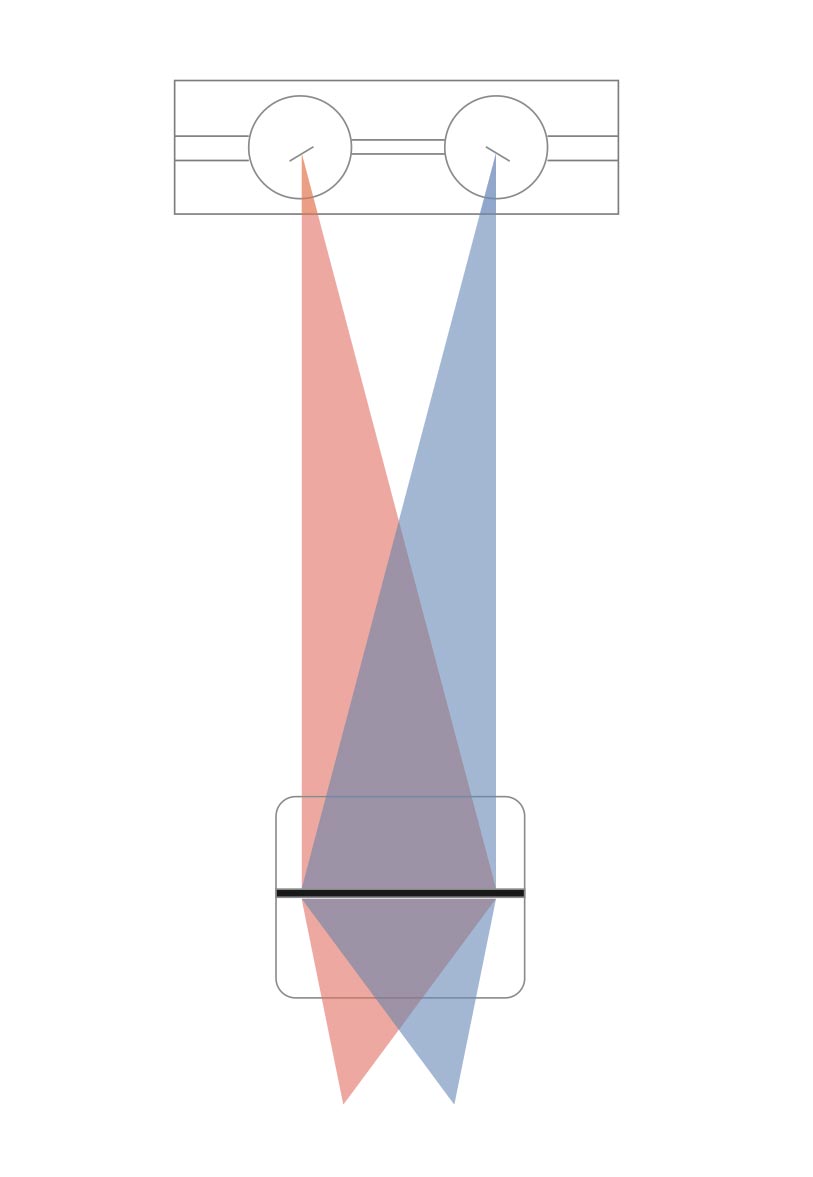
Fig. 1. Diagram of binocular vision. (Showing the differing angles of left and right eyes viewing the same object. The brain combines the two to mentally create a single image.). Bard Graduate Center.
+The appearance of linear perspective is a second element of human vision that also provides a philosophically subjective view of the world. For example, parallel sidewalks seem to gradually converge toward a distant point, and tall buildings appear smaller when they are further away from a viewer. However, in reality objects remain the same size, even as our brains depict them as shrinking or growing in our visual field. Visual appearance and physical presence are not the same and often differ.
Stereocards, when seen through a stereoscope, seek to replicate the binocularity of eyesight. Photography recreates the visual appearance of a scene more precisely than prints and drawings, because it documents the world in an exact manner. Not only must light, shadows, lines, and proportions appear realistic, but a depiction needs to be almost exactly replicated with a subtle horizontal shift in order to provide views that mimic each individual eye. When successful, a two-dimensional surface is perceived as a three-dimensional scene.
Photographers typically created stereoviews using a twin-lens camera with exposures about two inches apart to imitate the positions of two human eyes. Although a single lens camera can be used, there is a risk of changes taking place in the scene during the lapse of time between exposures, such as moving cars or clouds. Advice in The Youth’s Companion reminded amateurs that the pictures must also be developed in the same manner and that while two negatives could be processed in the same solution and printed simultaneously onto a single paper, identical treatment “is assured in the regular stereoscopic camera by the use of a single plate, on which both pictures are made, and which is exposed, developed, and printed as a single picture would be.”
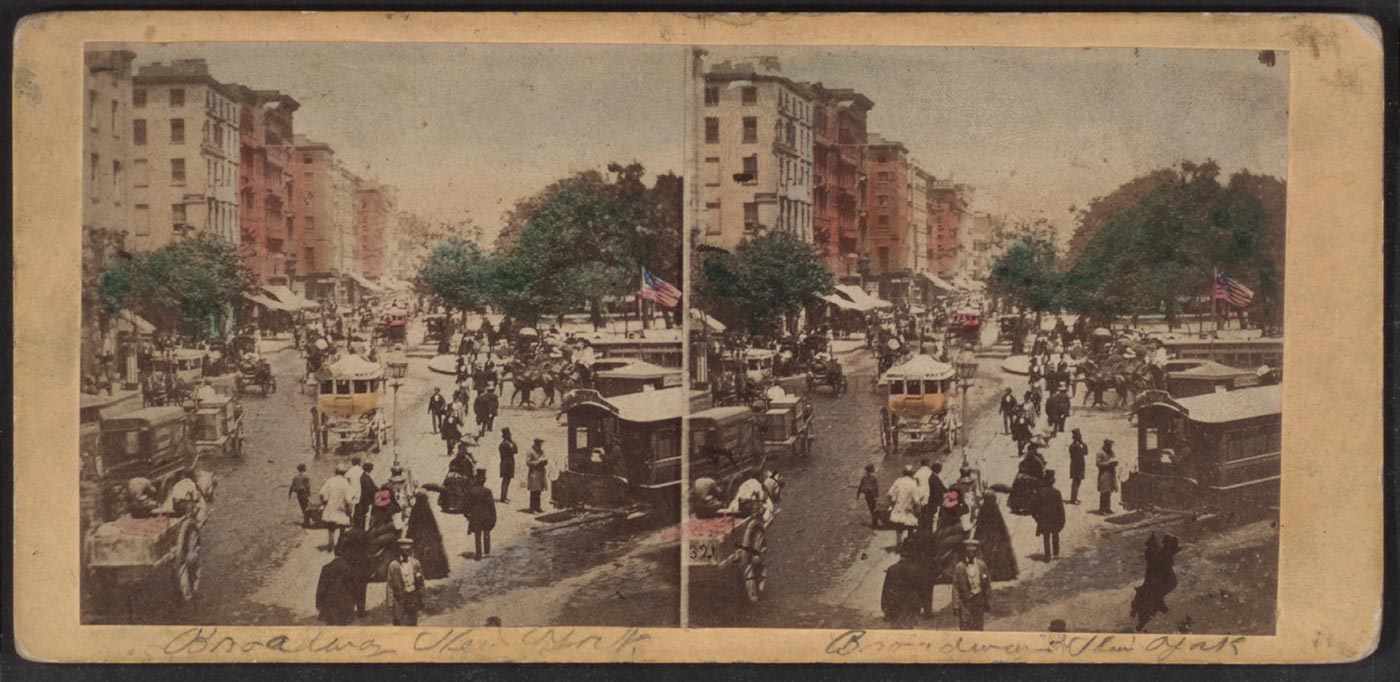
Fig. 2 Edward Anthony and Henry T. Anthony. Broadway from Barnum’s Museum Looking North, 1860. Hand-colored albumen silver prints from glass negatives (stereoscopic views), published by E. & H. T. Anthony, Anthony’s Instantaneous Views, No. 321. Robert N. Dennis Collection of Stereoscopic Views, Miriam and Ira D. Wallach Division of Art, Prints and Photographs, The New York Public Library, Astor, Lenox and Tilden Foundations.
+Commercial stereocard manufacturers generally did not color their products for this very reason. The mass-production assembly-line systems were not prepared to treat each photograph in a pair identically, and even the most careful application of coloring was also unlikely to be precise enough to match the exactness of the photographic process. Even subtle disparities raised the viewer’s awareness of a card’s flat surface and detracted from the stereoscopic effect, but this fact did not deter some consumers from coloring their own images after purchase, as was likely the case in Broadway from Barnum’s Museum Looking North (fig. 2). Note the variations, particularly in color opacity but also in the shape of colored regions, that would hinder the replication of binocularity.
Beyond assuring that the two photographs depict an identical scene, strategic choice of image content and style enhanced the feeling of depth and realism, or photographic verisimilitude, in stereoviews. The more details and figures in a scene and the more variation in the distance of objects from the observer, the greater the three-dimensional effect would be. A complicated view with “intervening elements,” as Jonathan Crary writes, allows a person to understand an object’s placement relative to others and establishes layers of planes receding backwards, as compared to a single subject portrait or still life.
Linear perspective, often in the form of diagonal lines, imitated human vision and also clarified the sense of depth by overtly indicating spatial recession. A strong differentiation between foreground, background, and areas in between makes the three-dimensionality of a stereoview more explicit. Slanted lines also organize an image and keep the observer from becoming overwhelmed by a densely filled picture. They divide a photograph into balanced sections and allow a photographer to create a “compellingly deep view . . . dissecting his frame into neat triangles of street, sky, and building facades.”
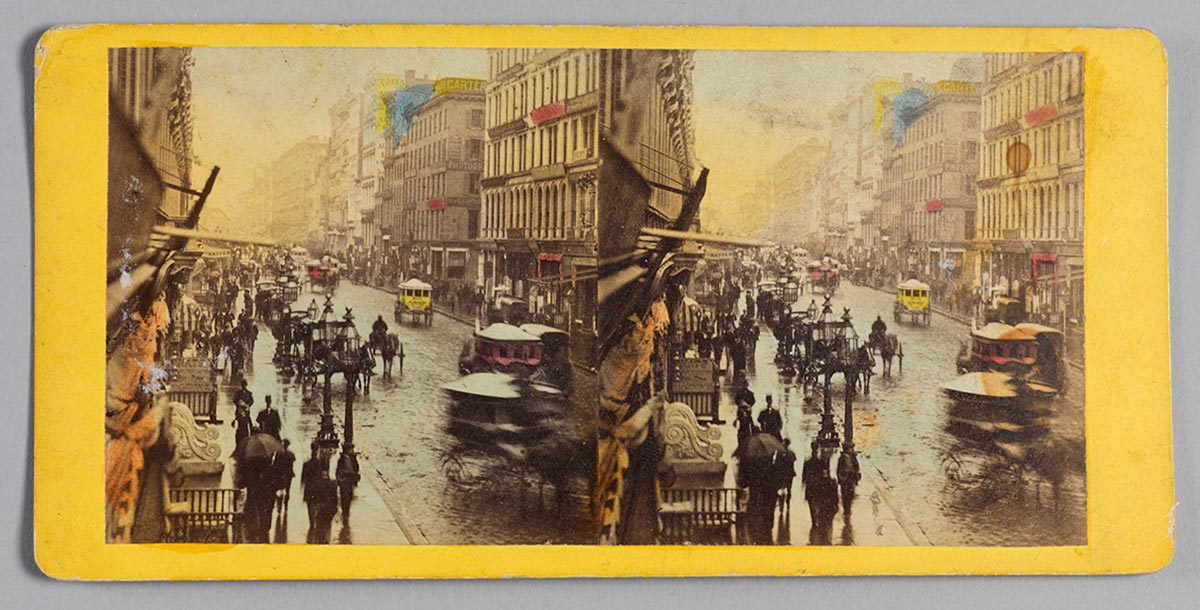
Fig. 3 Edward Anthony and Henry T. Anthony. Broadway on a Rainy Day [looking north], 1859. Hand-colored albumen silver prints from glass negatives (stereoscopic views), published by E. & H. T. Anthony, Anthony’s Instantaneous Views, No. 188. Collection of David Jaffee. Photographer: Bruce White.
+Broadway on a Rainy Day by E. & H. T. Anthony (fig. 3) was widely hailed for its accurate depiction of rain on the New York City street, and it epitomizes these ideal elements for three-dimensionality. The sky, buildings, and street each form distinct areas, which are filled with architectural details and a variety of pedestrians and vehicles. Broadway from Barnum’s Museum Looking North (see fig. 2), also uses a diagonal street and figures visually layered behind one another. In both stereoviews, the overlap of people, streetlights, and omnibuses allows an observer to place subjects spatially in relation to each other and to sense depth and distance in the overall scene.
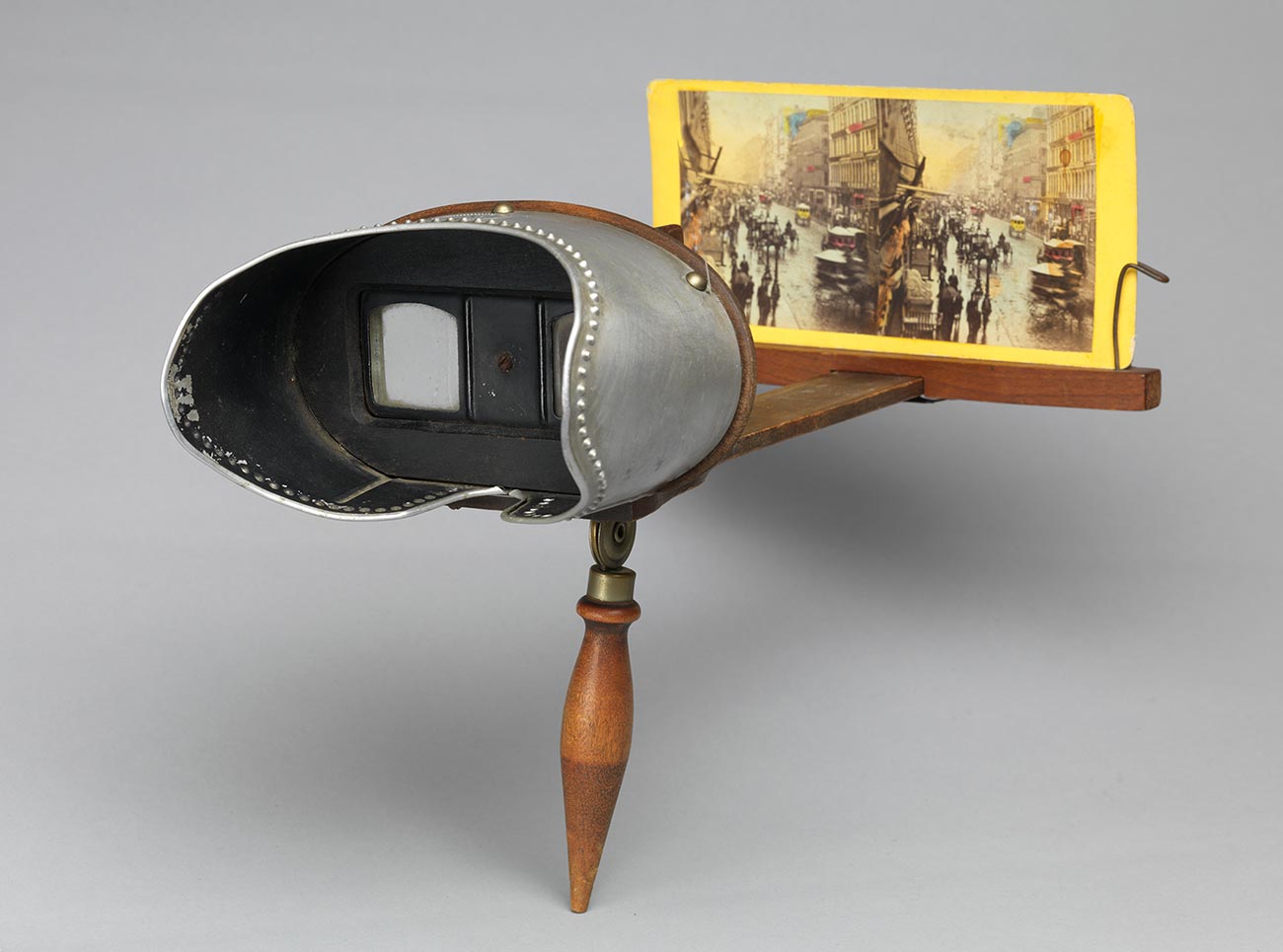
Fig. 4 Designed by Oliver Wendell Holmes and Joseph Bates. Stereoscopic viewer (with stereoscopic view), 20th century. Library, Bard Graduate Center. Photographer: Bruce White.
+Viewing equipment played a significant role in replicating binocularity and enhancing three-dimensionality. The two photographs, when seen through a stereoscope, appear merged as if the actual scene were viewed with the user’s own eyes. The handheld Holmes-Bates Stereoscope (fig. 4) isolated each eye’s field of vision so that it would see only its corresponding image. Blinders also removed any distractions or extraneous light, and a sliding holder allowed for proper adjustments of the cards, tailored to a user’s particular eyesight. This inexpensive model quickly became the most popular stereoscope for consumers.
When working cohesively, stereoviews provided nineteenth-century consumers with an enchanting experience in the comfort of their parlor. This leisure-time activity gave the impression of a magic that “cheats the senses with its seeming truth.” The ability to see depth in stereoviews and to enjoy the hyperrealistic visual experience was acquired through practice, but the activity quickly caught on and became part of popular culture, especially in the United States. People of all ages took to “the illusion of solidity, the possibility of feeling yourself actually present and immersed in a scene.”
Stereoviews offered something new and unique compared to two-dimensional print and photographic images: an almost perfect replica of realism. They portrayed a scene, educating and informing the observer while stirring interest in the scientific process of fooling one’s own eye. New York’s urban landscapes proved ideal for composing three-dimensional views. The far-reaching boulevards and grid layout offered ample opportunities to find disappearing perspective lines and triangular divisions in the environment. The traffic and activity stimulated by commercialism provided a wide variety of figures located all along the streets, assisting with a viewer’s comprehension of depth.
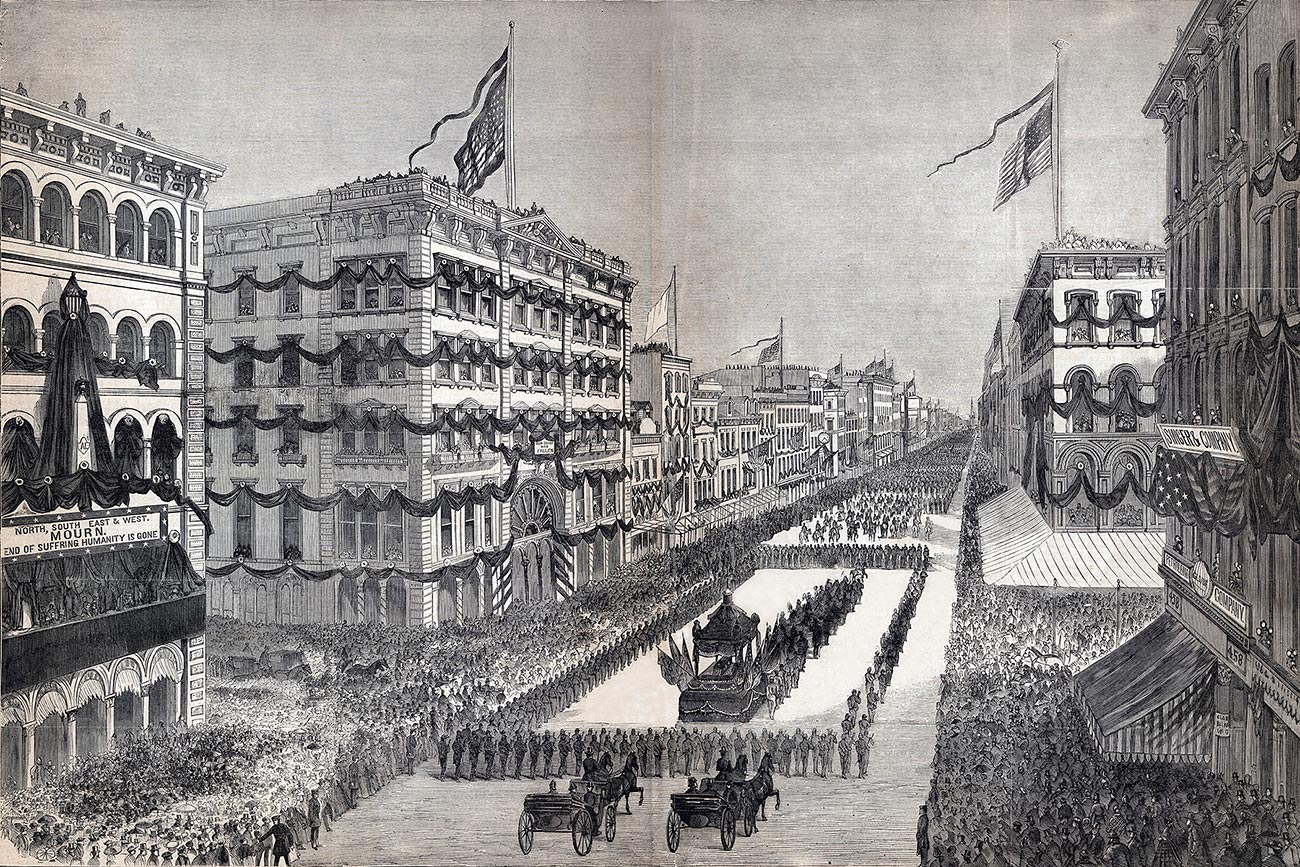
Fig. 5 “The Lincoln Funeral, April 25, 1865.” From Frank Leslie’s Illustrated Newspaper, May 13, 1865. Courtesy of the House Divided Project at Dickinson College.
+These urban characteristics of New York made stereoviews an ideal visual form to depict the city in the most accurate and realistic way possible. Consider a lithograph depiction of President Abraham Lincoln’s funeral procession through New York City in 1863 (fig. 5) with its familiar diagonal perspective line and numerous layered details filling its sections. A viewer, however, would be acutely aware of the flat surface and fabrication of the image, which makes it impossible to mistake this as a real moment frozen in time, rather than an artistic representation and interpretation. Alternatively, consider a photographic stereoview of the very same incident depicted from a similar angle (fig. 6, fig. 7). Looking through a stereoscope, a viewer feels as if he were physically attending the event and senses that he could reach out and see his hand appear in the visual field. Of course, the two forms served different purposes and were available in different media, but the dramatically enhanced experience gave stereoviews a huge advantage as novelty in the commercial sector and leisure time cultural commodity in the domestic parlor.
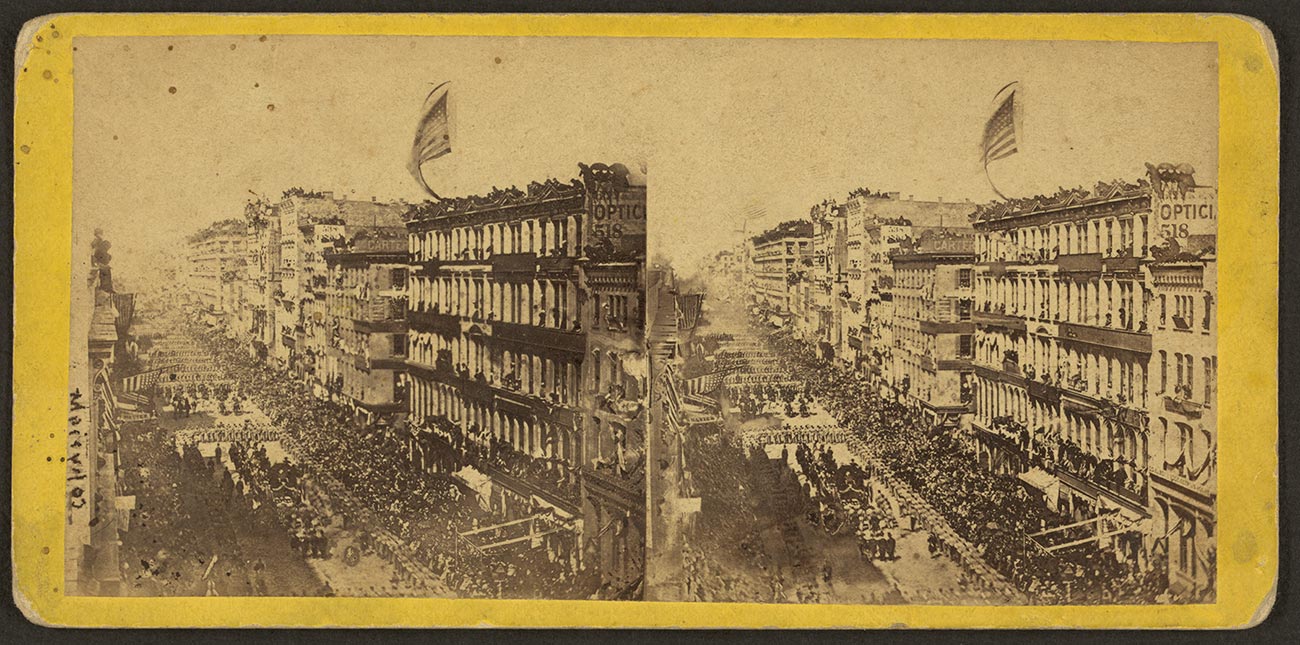
Fig. 6 Edward & Henry T. Anthony. The Funeral of President Lincoln, New-York, April 25th, 1865, 1865. Album silver prints from glass negatives (stereoscopic views), published by E. & H. T. Anthony. Courtesy of the Library of Congress Prints and Photographs Division.
+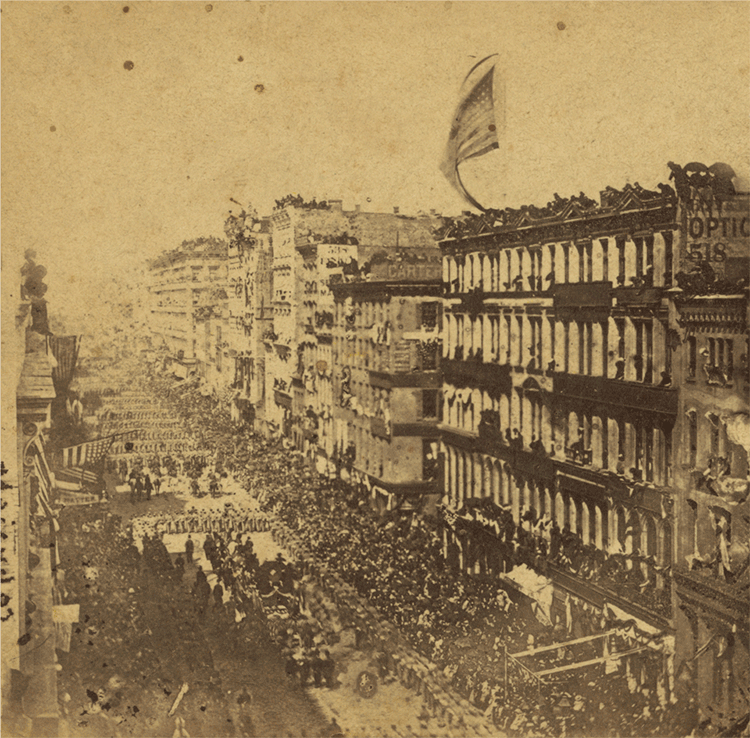
Fig. 7. Quick movement between left lens and right lens photos/perspectives in the GIF simulate the 3D effect of seeing them through a stereoviewer. Edward & Henry T. Anthony.The Funeral of President Lincoln, New-York, April 25th, 1865, 1865. Album silver prints from glass negatives (stereoscopic views), published by E. & H. T. Anthony. Courtesy of the Library of Congress Prints and Photographs Division.
+
